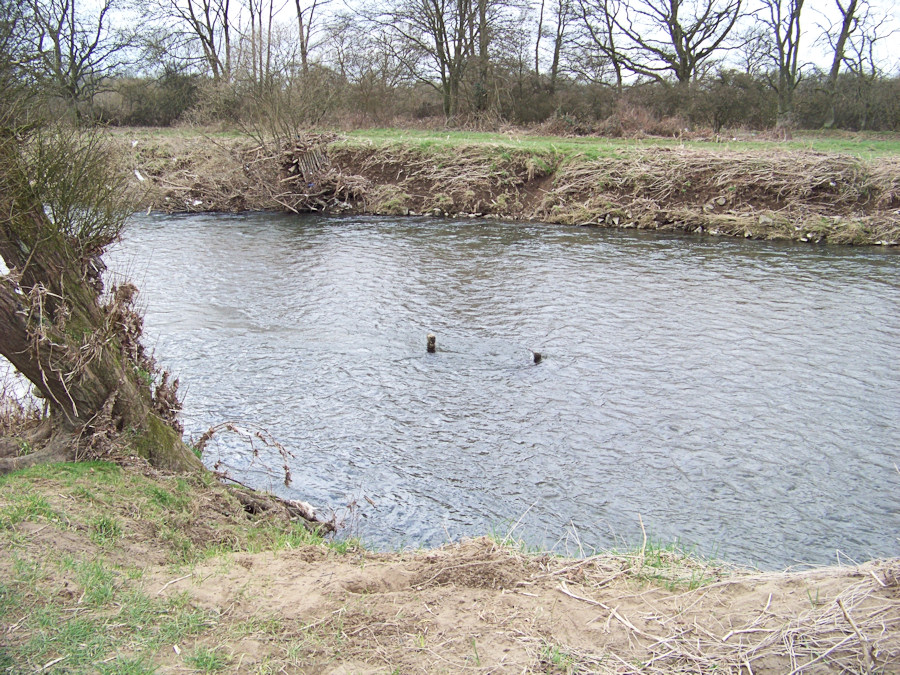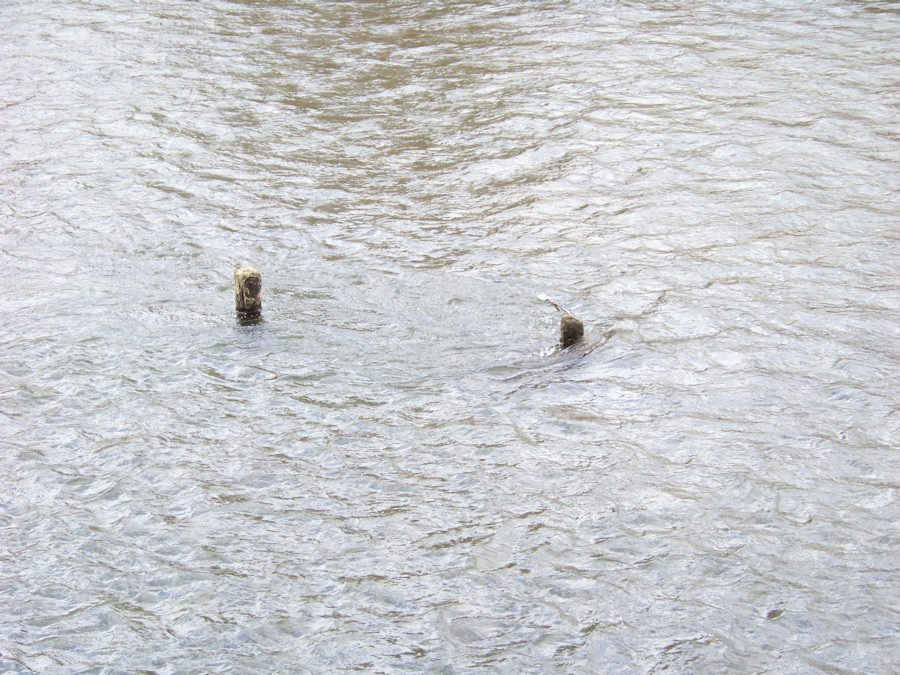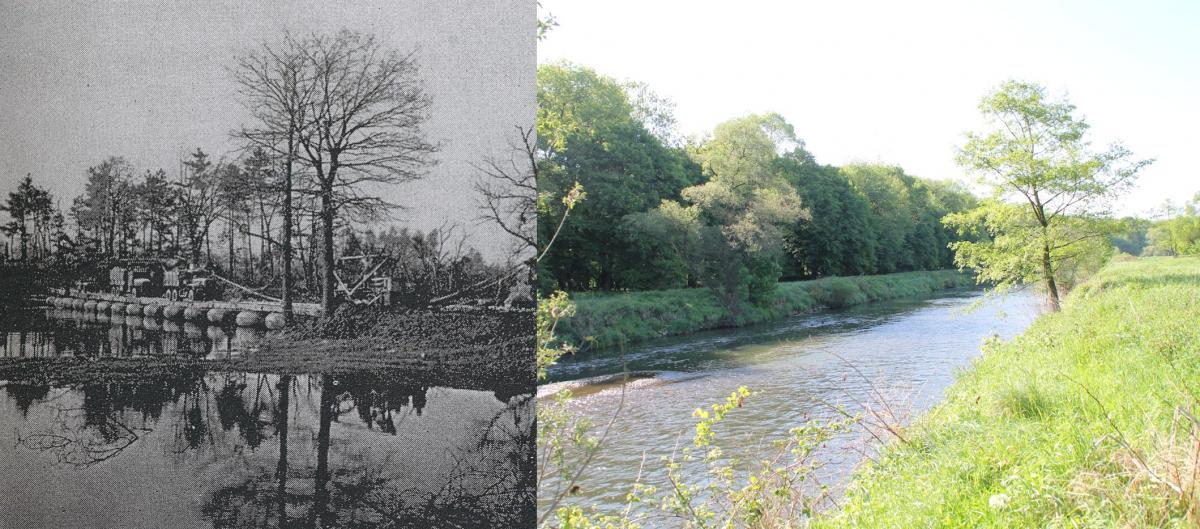IS this of any value on your research it mentioned 124 ENGINEERS B Company
At 1940 that evening A Company of the doughboys, in the face of motor, artillery and heavy flak fire from enemy in the vicinity of Troisdorf, successfully established a small bridgehead across the Agger River supported by assault gun and mortar fire which silenced several enemy guns. C Company, at 2040, crossed the river to the right of A; and B of the 59th came up from the Tank Task Force to cross the river between C and A Companies. Then the bridgehead was firmly secured the Engineers of B Company, ****124th Engineers, began construction of a pontoon roadway bridge but due to the inadequate supply of bridging materials the work was delayed. The position of the bridging operation was out of range for the 105 s, and the observer from the 496th adjusted the 177th Field Artillery Battalion an attached 155 mm battalion, onto the far side of the river; this Battalion raked the fields with fire and knocked out five of six 20mm guns and hit a building apparently used as an ammunition warehouse by the enemy, for it burned furiously with intermittent explosions.
At 0900 the following day the second platoon of the Engineer Company completed the bridge across the Agger—the first bridge to be built by the 13th Armored Division in combat. Most of the job was done under enemy fire. At 0930, the tanks started roll across the bridge and overran a few under-manned enemy strong points, taking many bewildered prisoners. Particularly amazed were the captured enemy Air Corps personnel who surrendered. They hadn t been expecting the Amen-cans to be there for another day or two. The two Forces, the Infantry Task Force now following up behind the Tank Task Force crashed rapidly on, meeting only sporadic resistance. B and D Companies of the 24th Tankers working in close cooperation and employing cagey strategy knocked out two 88 mm and five 40 mm guns in the vicinity of Spich. The attack continued North to Wahuerheide, which was taken without a scrap, then turned West. Just outside of Wahnurheide the leading tanks of B Company hit upon an enemy strong point consisting of two 75 mm guns and two 40 mm flak guns with an unknown number of riflemen and machine guns. Fierce fighting followed with heavy bursts and tracer flashes coming from both directions. However, by the coordination of tank and artillery fire the enemy was destroyed within thirty minutes. In the fierce exchange of fire one medium tank was lost — the first Combat Command B tank to fall to the enemy.
As the Tank Task Force was continuing the attack to the North, one platoon from Company B of the 59th missed a turn on the outskirts of Mulheim and worked its way down into that city, where they were cut off by an enemy force. While fighting furiously, and stubbornly defending themselves throughout the afternoon, three of the platoon were killed. The remainder of the platoon continued to resist the foe through the night but were finally overwhelmed and captured on the morning of the 12th of April.
The Tank Task Force reached the initial objective (Dunuwald, Germany) by 1940. However, in the mean time, Company B Tankers, trying to work their way back to the Task Force from their engagement at Wahnerheide, became lost and were forced to spend the night on on enemy airfield South of Mulheim. At dawn they found the airfield to be well defended by 88 mm guns and 40 mm anti-aircraft guns and were forced to withdraw, but only after they had destroyed two of the enemy guns. All tanks managed to escape undamaged and continued North to rejoin the Task Force West of Dunuwald.
Meanwhile A Company of the 83d Medics were, by means of the leapfrogging procedure, following up the Combat Command and doing a commendable job of evacuating casualties through the aid stations. Moving several times under the heavy fire of enemy guns the Medics, managed to get through, without damage or loss, to Troisdorf. However, at this point, two ambulances, each bearing two enlisted men, were captured by the Germans. The men were reported missing in action but five days later were returned to duty via the 97th Infantry Division which liberated them.
On the eleventh of April, the Infantry Task Force, following the Tank Task Force moved into, Elsdorf under light enemy artillery and mortar fire to clear two road blocks by-passed by the preceding tank task force. The leading elements of the Infantry Task Force reached Vingst around sun-set, but the 59th Armored Infantry Battalion Headquarters had become detached from the column when small arms fire and heavy artillery and mortar fire fell on the vehicles while passing through Rath. Reorganizing, these elements managed to m6ve forward to rejoin the Task Force at Vingst shortly after daylight the next morning. The, Infantry Task Force moving toward Dunuwald that afternoon was ambushed after proceeding only four miles. The resistance in the small village was quickly eliminated enabling the Task Force to race rapidly to the outskirts of Dunnwald, where the column was again delayed by road blocks. An attempt to reduce these defended road blocks brought about a counter-attack fr6m an enemy force, and bitter fighting took place. Ten men from one platoon of C Company of the 59th were killed before the counter attack was repelled While seventy seven of the enemy were killed and 142 taken prisoner. The Task Force assembled under intermittent artillery fire at Dunnwald.
The 496th, which had been following up the Combat Command from the Agger River crossing moved into final position and set up their Command Post in Eu. During the night an enemy patrol entered the area of B Battery and were halted by alert guards. The frightened Germans opened fire on the guards with Burp Guns and a panzer-faust, and wounded four of the artillerymen. The German captain leading the patrol was wounded and captured but the remainder of the patrol managed to escape into the darkness. Combat Command B Headquarters and the remainder of the combat command, following the axis of advance ran into stiff resistance in the way of artillery and mortar fire. Being unable to proceed in the darkness without too much danger, a decision was made to coil in the field near Bil ~nd spend the night in vicinity of the 496th s position.







